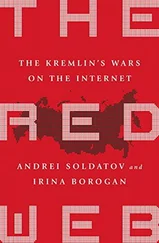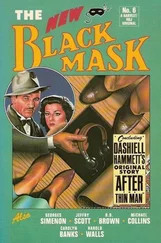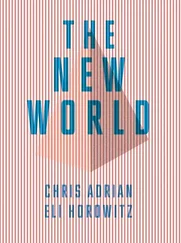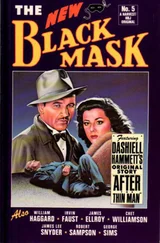Well, ladies and gentlemen, I have not covered remotely as much ground as I had intended in this course, but I did at least have the feeling, even though I unfortunately spoke alone for the entire time, of being in a kind of dialogue with you about these things, and that is why I felt that my actual intention of discussing the young Schoenberg should be placed in the service of understanding the current problems, even at the price of being unable to show you the beautiful elaborated Neapolitan sixth in the song ‘Traumleben’, or the even more magnificent treatment of form in the song ‘Lockung’, 29and suchlike. Regarding the op. 6 songs, however, I would like to add that the climate is an entirely different one here, that quantity truly turns into quality. All these titbits that I picked out of the early works for you to show how all these things are already latent in them, they now stop being titbits – if I may use so barbaric an expression – and become constitutive. So, from op. 6 onwards, the elements prescribed by the musical language really disappear altogether, and the elements that are used to construct the music’s tonality, which I could only touch on for now, these elements now become the only valid ones. In every one of these songs, tonality has already become a problem, a problem – please do not misunderstand me – not in the crude sense of being ‘problematic’, with the consequence that one cannot write tonal music any more. That would have been the easy way out. It was a problem in the sense that Schoenberg asked himself, I would almost say, just as Kant asked himself how synthetic judgements a priori are possible, that is, whether synthetic judgements are possible, Schoenberg similarly asked himself how tonality is possible, which meant: how is tonality still possible? And the answer he gave was really that, in the face of this abundance of surging events, it was possible only through construction, possible only if this same tonality that was once a given and constituted the framework for all compositions, if this became thematic, one might almost say, if all music set itself the task of re-creating this tonality on its own terms, instead of presupposing it merely as an external system of reference, as something finished. And, in the great evolutionary works from op. 6 onwards, this attempt to recuperate tonality for a musical content that is already conflicting with it at every moment brings about these incredible inner tensions that finally cause everything to fall apart. If you listen to the first introductory bars of the song ‘Lockung’, for example, you will immediately notice that, although one still essentially has a cadence and a tonal melody, its whole air of directness and the complexity of its elements really belong to a work by the mature Schoenberg. And you will truly feel here that this music only had to give a shake for the tonality to fall off it. To conclude, let me just touch on these few bars [plays no. 7 of Eight Songs, op. 6]. Essentially that is already the spirit of this [plays no. 4 of Six Little Piano Pieces , op. 19], and with such an abundance of musical shapes it is quite immaterial whether the chords are a little more or a little less tonal. This proves a superficial aspect by comparison, and it is generally the case in music that the surface elements always become worn out and disappear very quickly over time, and that what remains as the essence are only the inner workings of the musical fabric. Unfortunately there is no time left for me to analyse these few bars – I think it is ten bars – I cannot analyse them now as I had originally intended. One could spend hours discussing only these few bars, to say nothing of the entire song. These few bars consist of three little sections, the second of which, the middle section, also shortens the rhythm. This abbreviation of the rhythm is in turn a consequence of the rhythm in the accompaniment, which anticipates such a two-beat rhythm. And this anticipated two-beat rhythm also has consequences for the melody, but at the end it leads into a resolving passage that forms the cadence, although this middle section is a radical variation on the antecedent, in that the characteristic intervals [plays] are repeated faithfully but are no longer comprehensible as such because of the altered rhythm and the insistent tempo; and then the consequent, the cadential consequent seems entirely fresh, even though the three elements that form this mini-movement actually all hang together. But once again – let me say this again in closing – once again it is the case that Schoenberg does not take a rationalized thematic approach, deriving one motif directly from another, for here too the motivic connections lie beneath the surface. From the start, one is dealing with such wide-ranging variations that one can no longer say in a rationalist manner that this or that motif returns somewhere, for the same intervals have their own innate tension and their effects continue, but they are not simply repeated stubbornly and mechanically; and that is precisely what creates this impression of extraordinary tension and vehemence.
So, ladies and gentlemen, we have reached the end – regrettably, I must say, for I have the feeling that we had only now got into the matter properly, and that this was actually just the beginning. But all I can do is to hope that a little of what I have told you, especially the composers among you, will give you food for thought, and that you have perhaps seen from what I have told you that I presented the young Schoenberg not so that you would return to the young Schoenberg but to rejuvenate our aging new music a little with the help of the young Schoenberg. That was my intention, at any rate. Many thanks.
1 1. ‘The Aging of the New Music’ was first presented as a lecture on 26 April 1954 during the Contemporary Music Days in Stuttgart; South German Radio (SDR) broadcast it for the first time two days later. A revised version was broadcast by RIAS on 9 February 1955 and by Hessian Radio (HR) on 15 February 1955. Adorno also gave the lecture at the Darmstadt Academy of Musical Art and in Munich. Regarding the published version, see above, lecture 1, note 4.
2 2. The concept of pointillism [das Punktuelle] in music was precisely articulated when Herbert Eimert introduced the term in a lecture at Darmstadt in 1953. What was meant is a compositional approach that isolates the individual elements of composition in such a way that the relationships and proportions between them can be perceived; the opposite of this is the statistical concept, which was developed in music whose complexity no longer permits the discrete perception of those individual elements, instead challenging overarching perceptual categories relating to the average density, pitch, duration or intensity of passages or rising, falling, increasing or decreasing tendencies, and so forth. This conceptual pair expresses the dialectical circumstance that music organized in a more complex or subtle fashion is punished by cruder perception. Some of the most significant works of recent years are specifically conceived to address this dialectic; but critics spoke of pointillist music as if they were able to perceive even a single event in isolation within the statistical swarms of notes in those compositions. (Heinz-Klaus Metzger, ‘Gescheiterte Begriffe in Theorie und Kritik der Musik’, in die Reihe 5 [Vienna: Universal Edition, 1959], pp. 41–9, here p. 45; repr. in Metzger, Musik wozu: Literatur zu Noten, ed. Rainer Riehn [Frankfurt: Suhrkamp, 1980], pp. 277–93, at p. 285)Metzger is presumably referring to Eimert’s lecture ‘Die kompositorischen Grundlagen der elektronischen Musik (mit musikalischen Demonstrationen)’ [The compositional foundations of electronic music (with musical demonstrations)] from 28 July 1953. According to Hans Heinrich Eggebrecht (Handwörterbuch der musikalischen Terminologie, 1972, entry ‘Punktuelle Musik’), Eimert first referred to ‘pointillist music’ on 21 July 1952 in the presentation ‘Probleme der elektronischen Musik’.
Читать дальше












